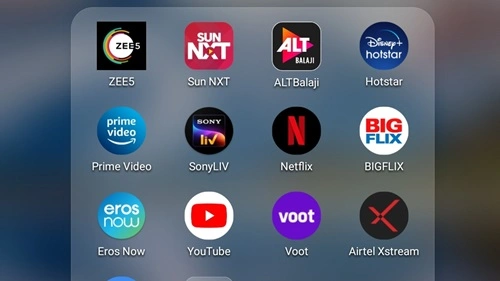Over-the-top (OTT) platforms have transformed the entertainment industry by offering on-demand content through the internet, bypassing traditional cable and satellite distribution methods. Platforms like Netflix, Amazon Prime Video, Disney+, and regional players such as Hotstar, Zee5, and Voot have gained immense popularity globally. With the surge in internet penetration and increasing demand for digital content, the OTT industry has emerged as one of the most lucrative sectors in media and entertainment. This article explores the business model of OTT platforms and delves into how they earn money.
Overview of the OTT Business Model

OTT platforms operate on a direct-to-consumer (D2C) model, providing video, audio, and live-streamed content across devices such as smartphones, smart TVs, and laptops. The key components of the OTT business model include:
- Content Delivery: Offering movies, TV shows, web series, sports, music, and documentaries.
- On-Demand Streaming: Allowing users to consume content anytime, anywhere.
- Subscription and Monetization: Generating revenue through subscription fees, advertisements, and other monetization strategies.
The ability to cater to diverse audiences and offer tailored content has enabled OTT platforms to penetrate global markets effectively.
Revenue Streams
OTT platforms monetize their content and services through multiple revenue models:
a) Subscription-Based Video on Demand (SVOD)
Under the SVOD model, users pay a recurring subscription fee (monthly, quarterly, or annually) to access a platform’s content library. This is one of the most popular revenue streams for OTT platforms.
Examples:
- Netflix: Offers tiered subscription plans based on video quality and the number of screens.
- Disney+: Provides exclusive access to Disney-owned content through subscription packages.
Revenue Generation:
- Subscription fees generate predictable, recurring revenue.
- Premium content, such as early access to movies or exclusive shows, attracts subscribers willing to pay more.
b) Advertisement-Based Video on Demand (AVOD)
In the AVOD model, platforms offer free content to users and generate revenue by displaying ads. This model is common among platforms targeting price-sensitive markets.
Examples:
- YouTube: Allows users to stream videos for free while earning through ad placements.
- MX Player: Offers free content monetized via advertisements.
Revenue Generation:
- Display ads, video ads, and sponsored content are sold to advertisers.
- Platforms use algorithms to target ads based on user demographics and preferences.
c) Freemium Model
The freemium model combines free and paid content. Users can access a portion of the content for free but must subscribe to unlock premium features or exclusive titles.
Examples:
- Hotstar (Disney+ Hotstar): Offers free content with ads and a premium plan for ad-free viewing and exclusive access.
- Spotify: Provides free music streaming with ads and a premium subscription for an ad-free experience.
Revenue Generation:
- Free users generate ad revenue.
- Premium subscribers contribute to subscription-based revenue.
d) Transaction-Based Video on Demand (TVOD)
In the TVOD model, users pay per view or for specific content. It works well for movies, concerts, or live events.
Examples:
- Apple iTunes: Users can rent or purchase individual movies and TV shows.
- Google Play Movies: Offers pay-per-view content for one-time payments.
Revenue Generation:
- A share of the transaction fee is retained by the platform.
- Bundled content or packages are offered at discounted rates to drive higher sales.
e) Hybrid Models
Many OTT platforms use a combination of SVOD, AVOD, and TVOD models to maximize revenue. For example:
- Amazon Prime Video: Combines a subscription model with pay-per-view options for select content.
- Hotstar: Offers a mix of free, ad-supported content and premium, ad-free plans.
f) Licensing and Distribution
OTT platforms earn revenue by licensing their original content to other platforms or networks. They may also distribute content created by third-party producers.
Examples:
- Netflix licenses some of its original shows to traditional TV networks in international markets.
- Platforms distribute regional or independent films globally for a fee.
g) Live Streaming and Pay-Per-View
OTT platforms offering live streaming of sports, events, or concerts generate revenue through pay-per-view or exclusive subscriptions.
Examples:
- Hotstar streams live cricket matches with premium subscriptions.
- DAZN offers live sports events on a subscription basis.
h) Partnerships and Bundled Services
OTT platforms partner with telecom operators, internet service providers (ISPs), and device manufacturers to bundle their services with other offerings.
Examples:
- Netflix and Amazon Prime are often bundled with broadband or mobile plans.
- Platforms collaborate with smart TV manufacturers for pre-installed apps.
Cost Structure
Operating an OTT platform involves significant investments across multiple areas:
a) Content Creation and Licensing
- Platforms spend heavily on producing original content (e.g., Netflix Originals) and acquiring licensing rights for third-party shows and movies.
- Regional content investments are rising as platforms cater to diverse audiences.
b) Technology and Infrastructure
- Maintaining a robust streaming platform with advanced features like AI-driven recommendations and multi-device compatibility requires substantial investment.
- Cloud storage and Content Delivery Networks (CDNs) ensure seamless streaming.
c) Marketing and Customer Acquisition
- OTT platforms spend significantly on marketing campaigns, influencer collaborations, and referral programs to attract and retain subscribers.
d) Bandwidth and Data Costs
- Platforms incur bandwidth costs for high-quality streaming, especially for HD and 4K content.
e) Regulatory Compliance
- OTT platforms must adhere to country-specific regulations, including content censorship and data privacy laws.
Unique Features Driving Revenue Growth
a) Original Content
OTT platforms invest in exclusive, original content to differentiate themselves and attract loyal subscribers. For example, Netflix’s “Stranger Things” and Amazon Prime’s “The Boys” have massive fan bases.
b) Personalization
AI-driven algorithms offer personalized content recommendations, increasing user engagement and retention.
c) Regional Content
Platforms are increasingly focusing on local languages and culturally relevant content to penetrate regional markets.
d) Subscription Bundling
OTT platforms often bundle their services with telecom plans, smart TVs, or e-commerce memberships to increase user adoption.
Challenges and Opportunities
Challenges
- Intense Competition: With multiple players in the market, acquiring and retaining subscribers is challenging.
- Content Costs: Producing and licensing high-quality content is expensive.
- Piracy: Unauthorized distribution of content reduces potential revenue.
Opportunities
- Global Expansion: Emerging markets with increasing internet penetration offer vast growth potential.
- Ad-Based Growth: AVOD platforms can tap into price-sensitive markets like India and Southeast Asia.
- Technology Integration: AI and machine learning can enhance content discovery and viewer engagement.
Financial Overview
OTT platforms have experienced exponential growth in the past decade. Global OTT revenue is projected to reach $223 billion by 2026, driven by subscription growth, advertising revenue, and regional market penetration.
Conclusion
The OTT business model has revolutionized the way people consume content, offering unprecedented convenience and choice. By leveraging diverse revenue streams, such as subscriptions, advertisements, and partnerships, OTT platforms have positioned themselves as dominant players in the entertainment ecosystem. With advancements in technology and a growing demand for personalized content, the future of OTT platforms is poised for sustained growth and innovation.

